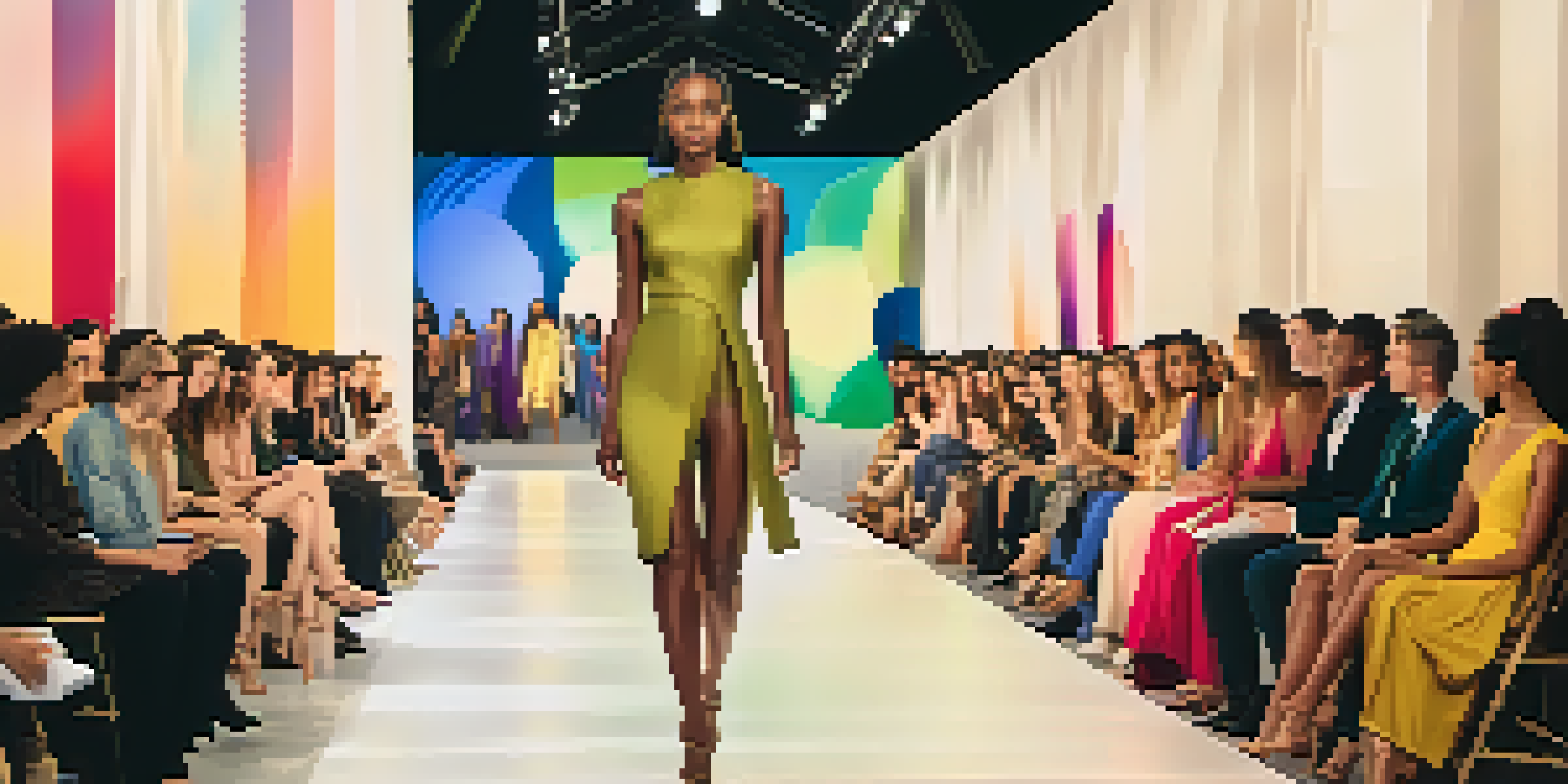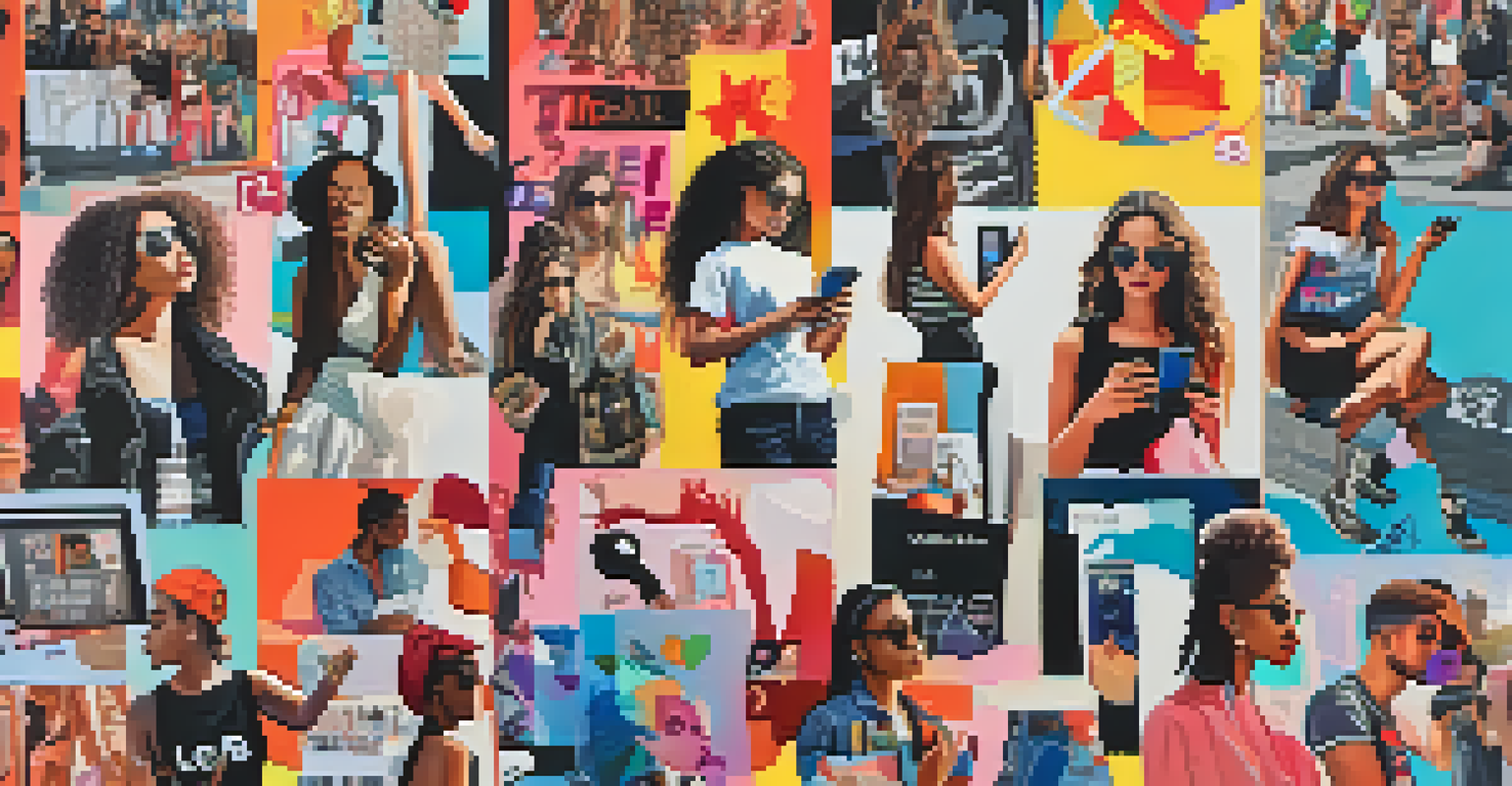Fashion Weeks: Platforms for Political and Social Change

The Evolution of Fashion Weeks: A Brief Overview
Fashion Weeks have evolved from mere showcases of style into influential platforms for cultural expression. Initially, these events focused solely on designer collections, but over time, they have embraced broader themes. Today, they serve as a stage where fashion intersects with pressing social and political issues, reflecting the world’s most urgent conversations.
Fashion is the armor to survive the reality of everyday life.
In cities like New York, Paris, and Milan, designers have increasingly used their runways to communicate messages that resonate beyond the fabric. For example, the 2017 New York Fashion Week featured collections that highlighted women's rights, while designers like Prabal Gurung expressed solidarity with the immigrant community. This shift shows how fashion can be a voice for change.
As we look at the history of Fashion Weeks, it's clear that these events have transitioned into more than just fashion displays. They have become critical cultural moments that invite dialogue and inspire action, demonstrating the power of art in shaping societal norms.
Fashion as a Reflection of Societal Issues
Fashion has always been a mirror to society, capturing the zeitgeist of the era. Designers often draw inspiration from current events, using their collections to comment on social injustices, climate change, and political unrest. This connection between fashion and societal issues allows the industry to remain relevant and engage audiences on a deeper level.

For instance, during the Black Lives Matter protests, many designers integrated themes of racial equality into their collections. The powerful imagery and statements made on the runway not only raised awareness but also encouraged conversations about diversity and representation in the fashion industry. This highlights how fashion can actively participate in social movements.
Fashion Weeks Reflect Social Change
Fashion Weeks have evolved into platforms that address pressing social and political issues, showcasing collections that resonate with urgent global conversations.
By showcasing collections that address these issues, the industry can influence public perception and encourage consumers to think critically about their choices. The fashion narrative can inspire change, leading to a more conscious and aware society, one garment at a time.
Designers Leading the Charge for Change
Several designers have taken it upon themselves to use their platforms for advocacy, becoming pioneers of change within the fashion landscape. Figures like Stella McCartney champion sustainable fashion, focusing on eco-friendly materials and ethical practices. Their commitment not only sets a standard but encourages others in the industry to follow suit.
In the world of fashion, change is the only constant. It reflects our society's evolution.
Moreover, designers like Christian Siriano have utilized their platforms to uplift marginalized voices, consistently showcasing diversity in body types and backgrounds. By doing so, they challenge the traditional notions of beauty and inclusivity, turning the runway into a celebration of individuality. Their proactive approach demonstrates how influential design can drive societal progress.
These designers prove that fashion is not just about aesthetics; it's a powerful tool for advocacy. Their work inspires both their peers and consumers to engage in conversations about sustainability and social justice, ultimately fostering a more equitable fashion industry.
Collaborative Efforts: Fashion and Activism Unite
The intersection of fashion and activism has led to numerous collaborative efforts that amplify social messages. Events like the Fashion for Relief show, founded by Naomi Campbell, bring together designers, models, and celebrities to raise funds for various charitable causes. Such collaborations highlight the industry's potential to create positive change.
In recent years, we've seen partnerships between fashion brands and grassroots organizations, focusing on issues like climate change and women's rights. These initiatives not only raise awareness but also contribute financially to movements that drive real change. For example, some designers have committed portions of their sales to support humanitarian efforts, showing a tangible commitment to social causes.
Designers Advocate for Inclusivity
Prominent designers are leading the charge for change by using their platforms to promote sustainability and diversity in the fashion industry.
These collaborations emphasize the notion that fashion can be a force for good. When the industry unites for a common purpose, it creates a ripple effect that extends beyond the runway, inspiring consumers to become part of the change.
The Role of Social Media in Fashion Activism
Social media has transformed the way fashion communicates with the public, providing a powerful tool for activism. Platforms like Instagram and TikTok allow designers and brands to share their messages instantly, reaching a global audience. This democratization of communication has made it easier for social causes to gain traction and for voices to be heard.
For instance, during major events like Fashion Weeks, hashtags related to social justice can trend, amplifying messages and mobilizing support. Influencers and activists alike use their platforms to share insights, challenge norms, and promote awareness about critical issues. This interconnectedness fosters a community where fashion and activism coexist harmoniously.
As fashion continues to embrace social media, it becomes increasingly possible for consumers to engage directly with causes they care about. This has led to a more informed audience, one that not only follows trends but also advocates for social change, demonstrating the industry's evolving role in society.
Challenges Faced in Merging Fashion with Activism
While the merging of fashion and activism presents exciting opportunities, it also comes with challenges. One significant issue is the potential for 'performative activism,' where brands may make shallow commitments to social causes without genuine follow-through. This can lead to skepticism among consumers who seek authentic engagement.
Additionally, navigating the fine line between advocacy and commercialism can be tricky. When brands capitalize on social movements for profit, it risks diluting the message and undermining the cause. Consumers are becoming increasingly aware of these tactics, demanding transparency and accountability from the brands they support.
Social Media Amplifies Fashion Activism
Social media serves as a powerful tool for fashion activism, enabling designers and brands to instantly share their messages and engage a global audience.
Addressing these challenges requires a commitment to authenticity and a willingness to engage in meaningful dialogue. Fashion brands must strive to create genuine connections with the causes they support, ensuring their efforts resonate with consumers and contribute to real change.
Looking Ahead: The Future of Fashion Weeks and Activism
As we look to the future, the integration of fashion and activism is likely to deepen, shaping the industry in unprecedented ways. Upcoming Fashion Weeks may prioritize sustainability, inclusivity, and social justice, leading to a more conscious approach to design and marketing. This shift is essential as consumers increasingly demand ethical practices from brands.
Moreover, the role of technology in fashion activism will continue to grow. Innovations such as virtual runway shows and augmented reality experiences may provide new avenues for designers to showcase their messages. This technological evolution can democratize access to Fashion Weeks, allowing diverse voices to be heard on a global scale.

Ultimately, the future of Fashion Weeks holds promise for a more interconnected world where style and substance coexist. As the industry evolves, it will be crucial for designers and brands to remain committed to their advocacy efforts, ensuring that fashion continues to be a vehicle for social and political change.